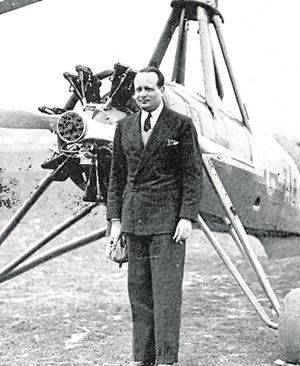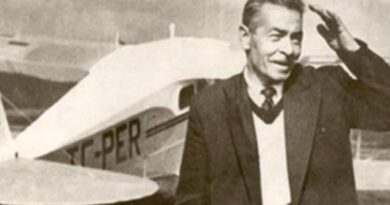Juan de la Cierva – The Spanish Genius
A Genius’ Early Life
Juan de la Cierva y Codorníu was born in Murcia, Spain. He was born in September 21, 1895. He was son of a criminal lawyer, politician and businessman. His father’s name was Juan de la Cierva y Peñafiel. De la Cierva was born to a wealthy family.
Juan de la Cierva felt a strong passion for the art of flying. He was regarding the flying as a combination of both art and engineering. He witnessed the first airshow in Barcelona, in 1910. From his early childhood, he was passionate about it. He built a biplane with two of his friends. At that time, he was only sixteen. He called it BCD.1, which successfully raised to the skies.
Meteoric Rise in Career
He received the titles of civil engineer, aeronautical construction specialist and aviator pilot, in Madrid. At the same time, he was delving into aeronautics in his spare time. He benefited from the studies of Jonkowski and Lanchester. From 1916, he dedicated himself to the design and construction of fixed-wing airplanes and gliders. However, once he was shocked by the plane crash of Captain Julio Ríos. Juan de la Cierva undertook the designing of a safer aircraft, with rotating wings. With this system, he would call an aircraft as an “autogyro”. From this very moment, he was going to be the inventor of this aircraft.

At the beginning, he designed three prototypes. However, all of them failed, because rotors were rigidly attached to the central hub. Articulating them freely, Juan de la Cierva finally achieved his objective. He found the necessary supporting force to lift the machine. In 1923, twenty years after the Wright brothers’ first flight, the project became a reality. The autogyro, the forerunner of future helicopters, made its first trip in Madrid. The trip was between the Cuatro Vientos and Getafe airports in Madrid. In 1925, he went to England to continue his successful work. He established the Cierva Autogiro Company. He succeeded with the support of Scottish industrialist James G. Weir. At the outbreak of the Spanish Civil War, De la Cierva supported the National forces.
Cierva-type autogiros were used widely in France, Germany, Japan, and the United States prior to World War II, when they were supplanted by helicopters. Cierva was killed in an airliner crash at the Croydon aerodrome, near London. Now, Juan de la Cierva is known as a genius inventor. Thanks to this company, he began to supply aircraft all around the world. On September 18, 1928, he became world famous after managing to cross the English Channel for the first time. After his successive innovations, he was awarded the Great Medal in 1932. He received many recognitions in his short life.
A few months after his 41st birthday, the international aviation genius passed away on December 9, 1936 in a plane crash at Croydon Airport. He was buried in a Catholic chapel in England. Until in 1946 his remains were transferred to Spain.
For more aviators click.
References:
Biography Info:
https://en.wikipedia.org/wiki/Juan_de_la_Cierva
https://www.historynet.com/juan-de-la-cierva-autogiro-genius.html


